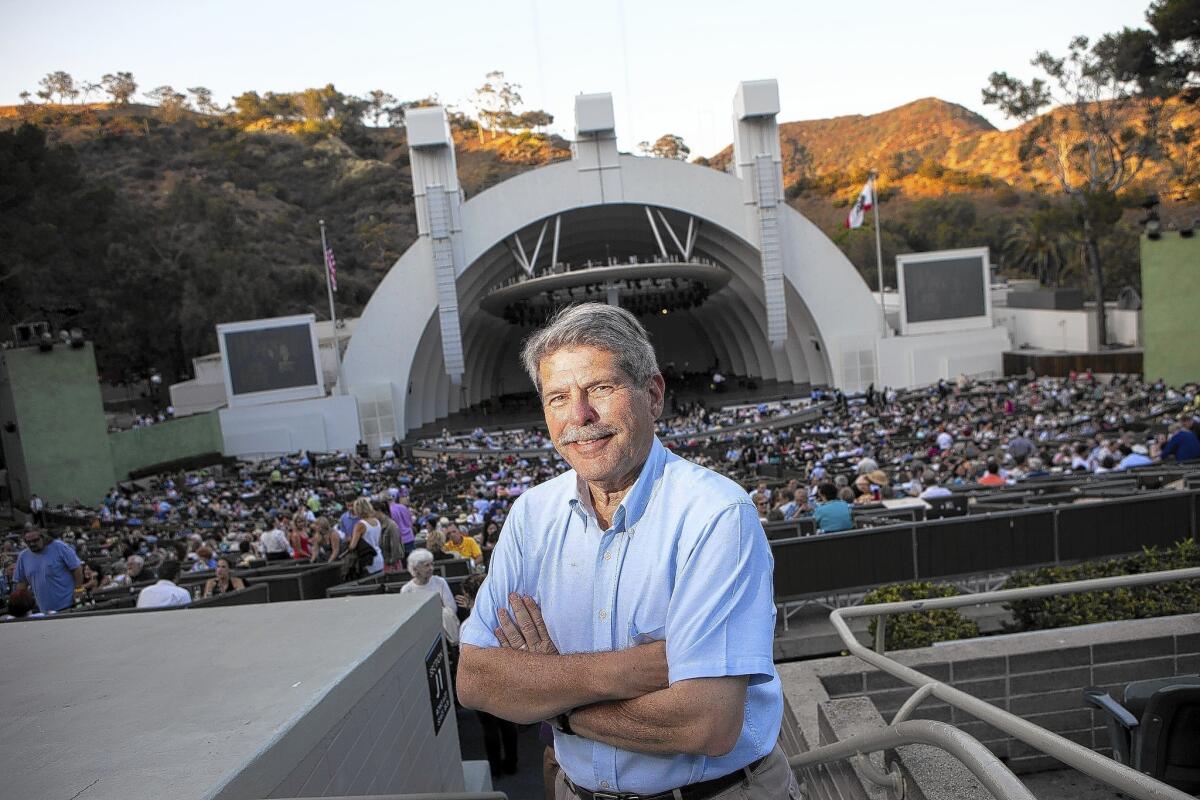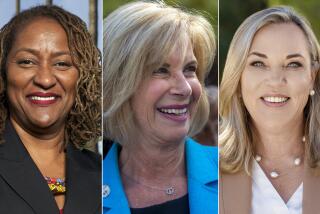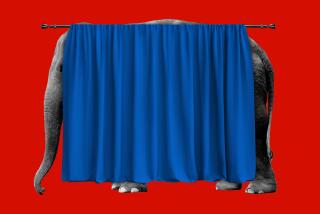Candidates in L.A. supervisors’ 3rd District race issue arts support

The Los Angeles arts scene is about to lose its best friend among elected officials, as Zev Yaroslavsky steps down from the county Board of Supervisors after 20 years, having run up against term limits.
It’s not certain whether his successor will continue a tradition going back to the 1930s of 3rd District supervisors enthusiastically advocating for the arts: Both Ed Edelman, who served for 20 years before Yaroslavsky took office in 1994, and John Anson Ford, who held the seat for 26 years until 1958, also made reputations as champions of the arts.
But indications are that there’s no anti-Zev among the candidates, regardless which one prevails at the polls in the June 3 primary election — or on Nov. 4 if no candidate wins a majority of the votes, forcing a runoff.
The advocacy group Arts for L.A. asked the current 3rd District candidates to respond in writing to questions about arts policy issues, and published the results on its website, https://www.artsforla.org. The three most prominent contenders all proclaimed a strong allegiance to arts and culture, and each backed increasing at least some component of county government’s funding of the arts.
Former Santa Monica City Council member Bobby Shriver invoked the history of strong arts support from 3rd District supervisors who’ve “led in building and maintaining our cultural infrastructure,” and promised to “continue that tradition.”
John Duran, currently serving on the West Hollywood City Council, and Sheila Kuehl, who spent 16 years in the state Legislature and now heads a public policy institute at Santa Monica College, both called for doubling arts fees that the county assesses itself to commission artworks at new or newly renovated county buildings.
The current fee is 1% of a project’s design and construction costs, and only applies to government buildings, exempting other kinds of construction such as roads, waterways and airports. Duran and Kuehl would end the exemptions.
Duran and Kuehl also proposed requiring private developers to pay an unspecified arts fee that would benefit unincorporated neighborhoods they’re building in; currently the county only charges fees for its own government-funded projects. Kuehl noted that 31 of 88 municipalities in L.A. County already require arts fees from private developers.
Shriver said he’s “open to exploring all options” for increasing development fees or expanding how they’re applied, but did not make a firm commitment.
At the 1% rate, the average county arts development fee was about $100,000 for each of the seven government-funded “Civic Art” projects completed in the current fiscal year; arts fees from 28 other county projects now in progress average about $249,000, including several that will hit the maximum fee of $1 million.
Kuehl proposed eliminating the cap, which applies to projects costing over $100 million. The benefits go to the artists commissioned to design and fabricate public artworks, and presumably to the public that gets to enjoy them.
By far the biggest investment county government makes in arts and culture is the $69.9 million a year in aggregate operating support it provides for the Los Angeles County Museum of Art, Natural History Museum of Los Angeles County, the Music Center and La Plaza de Cultura y Artes — which would rise to $72 million under county Chief Executive William Fujioka’s recommended budget for the coming 2014-15 fiscal year.
The amounts are mainly locked in by funding formulas adopted in the mid-1990s, which call for annual increases pegged to inflation.
Besides funding the big institutions, Duran said, the Board of Supervisors also “must play a greater role” in building their audiences. He didn’t state specifics, but said one possibility would be for the county to forge partnerships with “major employers and industries to sponsor nights” at the county-funded venues.
Kuehl said she’d want to help smaller organizations by allowing them free use of “underutilized” spaces in county-owned buildings. Another likely arts spending increase she proposed relates to operating a theater that’s part of a new community center being built in Hacienda Heights; Kuehl said she wants to “make certain the [Los Angeles County] Arts Commission is fully funded to operate the new theater.”
Alone among the candidates, Kuehl said that one of her priorities would be full funding of a long-range master plan for the John Anson Ford Amphitheatre and its surrounding property.
The supervisors so far have allocated $27.2 million for improvements begun in 2012 on the existing facilities; Kuehl said she’ll push for completing the full plan, which includes big-ticket items such as a new 299-seat indoor theater, a 99-seat event and rehearsal space, and a parking garage. A 2011 preliminary estimate put the total cost for the master plan at $61.2 million, including the work for which funds have already been OKd.
Shriver highlighted the need for improving the Arts Commission’s grants to nonprofit arts groups, saying that the current level, which Fujioka has proposed boosting from $4.1 million a year to $4.5 million, isn’t sufficient. Without specifying a target figure, he said the current grant-making represents “a missed opportunity to energize L.A.’s creative economy.”
Kuehl also backed a boost in the grants program, and proposed including groups that are not primarily arts-focused but run specific programs that feature an arts component. She said that although only “non-commercial” projects would qualify, “for-profit businesses” would be eligible to receive grants under the expanded program. Duran said that West Hollywood has used increases in its development fees to boost its arts grants, and that he would push for the county to do the same.
Shriver’s positions included insisting on no price increases for the $1 seats in the upper reaches of the county-owned Hollywood Bowl. He said his portfolio as a supervisor would encompass serving as an arts-funding rainmaker who’d try to persuade corporations and “philanthropic leaders” in the county to do more for the arts, and as a promotional megaphone and idea-generator who’d look for “innovative ways” to spread the word about L.A.’s arts offerings, including arts marketing aimed at travelers arriving at LAX.
Shriver cited a close family tie to the arts — his wife, Malissa Feruzzi Shriver, is a painter and a former chairman of the California Arts Council, the state grant-making agency to which she was appointed in 2005 by then-governor Arnold Schwarzenegger, before his estrangement from Bobby Shriver’s sister Maria.
Duran pointed to his service as current board chair of the Gay Men’s Chorus of Los Angeles, and said that as a supervisor he’d like to implement projects comparable to ones in which the chorus sends singers to public schools to “use music as a vehicle” for programs to prevent suicide among youths and discourage bullying.
Eric Preven, a writer, producer and entertainment consultant known for regularly playing the gadfly role at Board of Supervisors meetings, using the public comment periods for his ideas and complaints about county policies, said he’s concerned that some county-funded arts and cultural offerings are getting too pricey for many families, thus putting a damper on attendance.
He cited a recent decision to increase fees for bus rides to the Hollywood Bowl from park-and-ride lots around the county, and objected to the lack of free admission for children at the Natural History Museum — where attractions such as life-size dinosaur fossils and animal dioramas make it more of a natural magnet for kids than art museums such as LACMA, which under a program called NexGen offers free general admission to anyone up to the age of 17 and an accompanying adult.
“Folks will not opt in, even if they want to, unless we hold the line” on arts attendance costs, Preven wrote.
Of the four other candidates, Rudy Melendez and Douglas Fay were less specific with their answers, and Arts for L.A. indicated that Yuval Kremer and Pamela Conley Ulich had “not yet responded.”
More to Read
The biggest entertainment stories
Get our big stories about Hollywood, film, television, music, arts, culture and more right in your inbox as soon as they publish.
You may occasionally receive promotional content from the Los Angeles Times.







